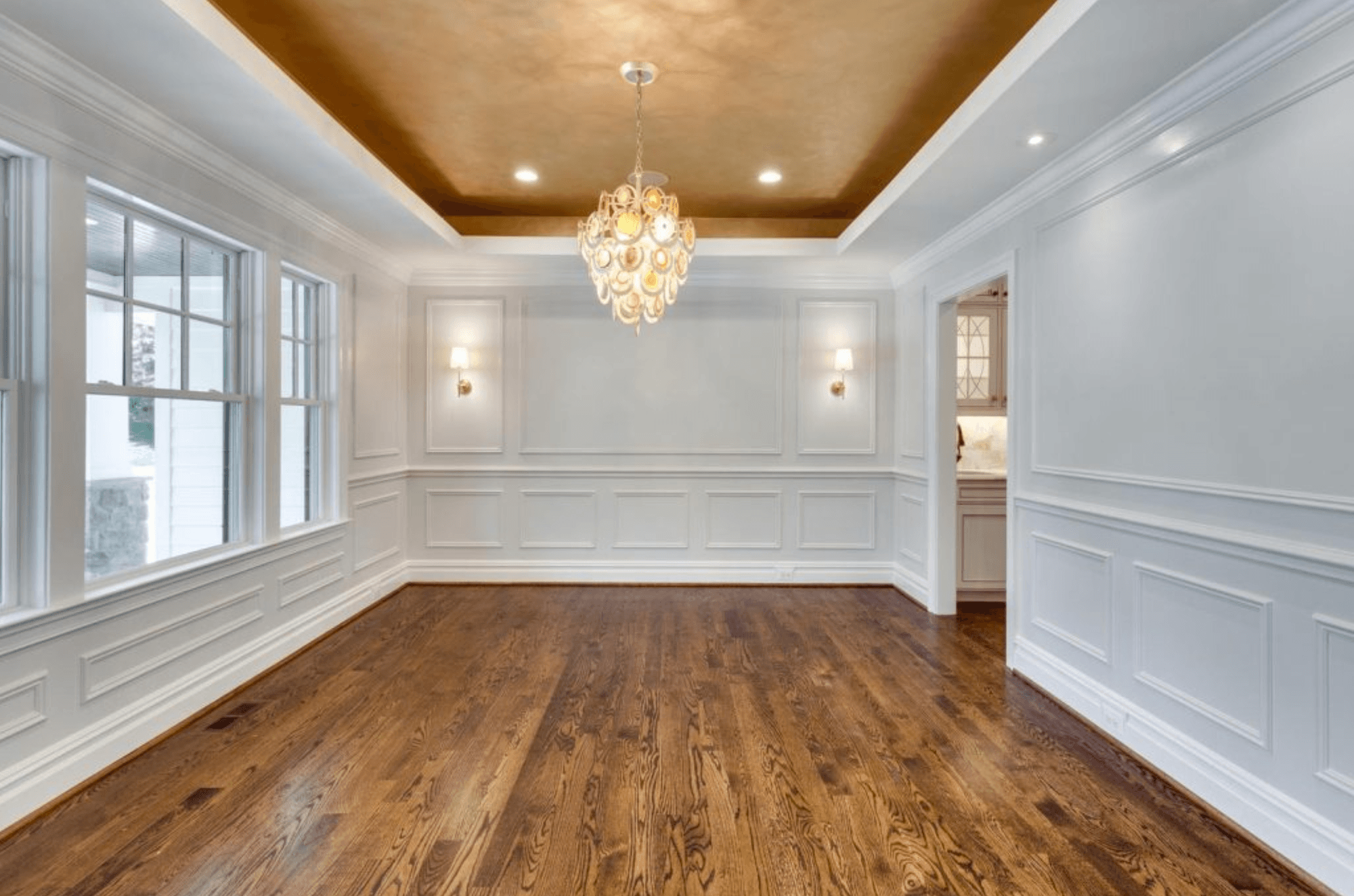5 Reasons Why You Need Moulding For Hardwood Floors
November 22, 2021
By: The Finished Space
Have you installed beautiful new hardwood floors and are currently trying to decide if you need moulding to complete the look? Moulding allows you to transition seamlessly between floors, walls, and ceilings, and it also has a few other valuable functions that might surprise you.
How to Choose the Right Moulding for Your Hardwood Floors
Knowing how to choose the right moulding style for your hardwood floors depends on several factors. Some mouldings work better with particular design aesthetics, so what’s your style? Are you working with more than one type of flooring or just hardwood? Are you already using moulding anywhere else in your home?
Of course, no matter how you answer those questions, there are definitely a few different moulding styles that you should consider for your hardwood floors.
Here are the best moulding types to pair with hardwood:
The Best Types of Moulding for Hardwood Flooring
The best types of hardwood floor moulding are quarter round or shoe moulding, baseboards, decorative moulding, and t-moulding. Of course, you aren’t limited to just those options. You should also be aware that some of these mouldings have specific purposes.
For instance, baseboards can be paired with almost any moulding style to add a bit of length, flair, and personality. Decorative moulding is excellent for covering unsightly seams with something beautiful and luxurious.T-moulding is best used to transition between different flooring types that are the same level.
There are almost limitless ways to customize the look and feel of your hardwood floor moulding. For a more detailed look at different moulding types, check out Metrie’s comprehensive product line.
5 Reasons Why You Need Hardwood Floor Moulding
Now that we’ve discussed the types of moulding, it’s time to dive into the reasons why moulding is so essential for hardwood floors.
Here are five professional reasons why you should add moulding to hardwood flooring:
1. It Creates A Cleaner, More Polished Aesthetic
Professionally installed moulding can create a polished aesthetic for your home. When installed correctly, it helps reduce the stark transition between floors, walls, ceilings, staircases, door frames, and even between different types of flooring.
There’s a sense of neatness and cleanliness to a home with moulding, and they are a perfect design addition to hardwood floors. Since hardwood floors are already eye-catching and luxurious, adding moulding just increases their appeal.
2. It Covers the Space Between the Wall and Hardwood Floors
With hardwood, you’re required to keep a tiny bit of space open at the edges, so the wood can expand and contract. These changes in size are due to humidity and temperature fluctuations and can’t be helped. If there isn’t enough space available for the wood to move, it can create uneven surfaces, cracks, and tripping hazards.
Unfortunately, these gaps can be unsightly and tarnish the overall look of your hardwood floors. If you use moulding to cover those gaps, no one has to see them, and your floors will maintain their luxurious aesthetic.
3. It Fills the Space Around Corners
Open spaces and gaps around corners are notoriously difficult to hide. Moulding can, and should, be used to cover this space, creating gorgeous transitions around tight corners.
There’s no need to leave those spaces open or messy looking, especially since gaps are a magnet for dust, grime, debris, and excess moisture, which can wreak havoc on your hardwood floors. Solving this today can save you from lots of trouble down the road.
4. It Establishes Seamless Transitions with Other Flooring Types
Moulding isn’t just a way to create smooth transitions between floors, walls, and ceilings. It can also be used to cover the seams between different flooring types. For instance, if you’re moving from hardwood in the living room to tile in the kitchen, you can cover the gap between the two styles with t-moulding or something similar.
Moulding can also be used to aid the transition between floor and staircase. If you want to make those transitions smoother and cleaner looking, moulding is the ideal choice.
5. It Makes Floors Easier to Clean and Maintain
Hardwood floors require lots of ongoing maintenance to keep them in tip-top shape. So, you should make sure cleaning and maintaining them is as simple as possible. Luckily, moulding creates a cutoff point where dust, debris, and moisture collect, making sweeping and mopping much more manageable.
Since moulding is essential in covering the gaps along the floor’s edges, it also prevents dust, debris, and moisture buildup. Moulding not only makes hardwood floors easier to clean; it also protects them from potential damage.
Which Moulding is Right for You?
Even if you don’t have hardwood flooring throughout your house, the same rules apply to every flooring type. Moulding is an ideal addition to any home because it creates a clean, sophisticated look that is both functional and aesthetically pleasing.
Now that we’ve discussed the necessity of moulding for hardwood floors, it’s time to dive a little deeper into which types of moulding are the best fit for your home.
If you’d like to figure out which moulding style best matches your design aesthetic, check out Option {M}. It’s a design tool that pairs specific moulding styles with popular design trends.

